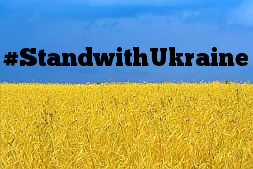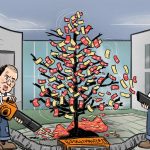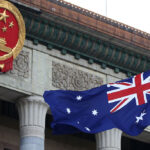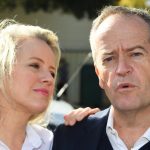The long, dark history of antisemitism in Australia

Antisemitic incidents have spiked in Australia since the October 7 attack by Hamas militants on Israeli communities outside Gaza and the subsequent Israeli war against Hamas inside the coastal strip.
According to the Executive Council of Australian Jewry, there were 368 anti-Jewish incidents reported in Australia between October 8 and November 19. This compares to a total of 478 antisemitic incidents for the entire year from October 2021–22.
As Liberal MP Julian Leeser, who is Jewish, said:
“We’re seeing things that I haven’t seen before in my lifetime – Jewish children afraid to wear their uniforms to school, people afraid to wear their Magen David [Star of David], afraid to wear their kippah.”
Yet, antisemitism is not a new phenomenon in Australia. In fact, it has a long history, which I have spent a half century researching. And this history is almost as long as European settlement itself.
Loud anti-Jewish voices
There have been Jews in Australia from the time of British settlement. As research has shown, they arrived as convicts in chains, yet with the absence of institutional antisemitism in the colonies, they were able to thrive. In fact, a Jew was elected to the Legislative Assembly in Western Australia in 1848, a full decade before the first Jew was elected to Britain’s parliament.
Australia, however, was not immune from what the historian Robert Wistrich has described as “the longest hatred”.
Open antisemitism started to become prevalent in the 1880s with the emergence of Australian nationalism and the campaign for federation. It was further fuelled by fears of an influx of Jews fleeing the pogroms in Russia.
Despite the small numbers of Russian refugees who did arrive, trade unions, politicians and the media decried their presence. The Bulletin (Sydney) and the sensationalist weekly Truth (Sydney) both gave voice to anti-Jewish and other racial prejudices of the day. The Bulletin commented:
“Even the Chinaman is cheaper in the end than the Hebrew […] the one with the tail is preferable to the one with the Talmud every time. We owe much to the Jew – in more sense than one – but until he works, until a fair percentage of him produces, he must always be against democracy.”
By the late 19th and early 20th centuries, anti-Jewish sentiments could be found across the political spectrum.
The Labor Party figure Frank Anstey, for instance, republished his anti-Jewish newspaper articles as a pamphlet in 1915 entitled The Kingdom of Shylock. John Norton, a nationalist publisher and NSW parliamentarian, expressed similar prejudices in his Truth newspaper. This undercurrent of antisemitism led to the exclusion of Jews from sporting and social clubs and some businesses. Yet, very few eastern European Jews actually settled in Australia during this time.
The largest wave of Jewish refugees occurred from 1938 to 1939, just before the second world war, and again from 1946 to 1954 with Holocaust survivors. They were again met with an antisemitic outcry in Australian newspapers, as well as in statements by members of parliament. Resolutions were also passed against Jewish migration by pressure groups, such as the forerunner of the Returned and Services League of Australia (RSL), the Australian Natives’ Association (a group advocating for federation and later the White Australia policy) and various unions.
In May 1939, Sir Frank Clarke, president of the Victorian Legislative Council, proclaimed:
“Hundreds of weedy East Europeans […] slinking, rat-faced men under five feet in height and with a chest development of about 20 inches […] worked in backyard factories in Carlton and other localities in the north of Melbourne for two or three shillings a week pocket money and their keep.”
Anti-Zionist agenda influenced by Soviet propaganda
After the war, The Bulletin, in particular, continued its anti-Jewish immigration campaign with cartoons depicting Jewish stereotypes. The sentiments around immigration were summed up by Henry (“Jo”) Gullett, a Liberal member of federal parliament, who said:
“We are not compelled to accept the unwanted of the world at the dictate of the United Nations or anyone else. Neither should Australia be a dumping ground for people whom Europe itself, in the course of 2,000 years, has not been able to absorb.”
In response to the anti-Jewish hysteria, Arthur Calwell, the newly appointed minister of immigration, introduced administrative policies that ensured the Jewish community remained a tiny minority (0.5%) of the population. These restrictions included a 25% limit on Jewish passengers on ships bound for Australia, which was later extended to planes.
Locally organised antisemitism also emerged in the 1950s and 60s. A young journalist, Eric Butler, promoted the Douglas Social Credit movement, which blamed the banking system for the Great Depression and, by implication, the Jews.
After the war, Butler formed a far-right organisation called the Australian League of Rights, which became a major force in promoting antisemitic libels, including the fraudulent Protocols of the Elders of Zion. By 1960, the league had become a nationwide movement.
Alongside the nativists were supporters of various eastern European fascist movements. They had slipped through the refugee selection process after the war and migrated to Australia as displaced persons. Some established branches of the antisemitic organisations they had belonged to in Europe, such as the Hungarian Arrow Cross and the Ustaša, a Croatian fascist movement.
After the 1967 Arab-Israeli war, some on the far left in Australia began promoting an anti-Israel agenda, particularly on university campuses. This anti-Zionist agenda was deeply influenced by Soviet propaganda. From the late 1950s onwards, the Soviets had tried to infiltrate the Middle East and developed an antisemitic and anti-Zionist propaganda machine to facilitate this.
In 1963, Trofim Kichko, a Ukrainian history professor, published a vitriolic antisemitic booklet titled Judaism Without Embellishment, which included attacks on Zionism. After an international outcry, the booklet was withdrawn. However, following Israel’s victory in the 1967 war, Kichko was rehabilitated and some of his venomous images were republished.
In 1969, the Sovetskaya Rossiya newspaper compared Zionism with fascism, implying Jews were Nazis. It also published an article saying “Zionism is the ideology that justifies war, killing and oppression”. The official Soviet newspaper, Pravda, referred to “the Israeli barbarians” and “a reactionary Zionist doctrine”.
The narrative that Israel was a racist colonial state was also reinforced by the Soviet Union, which the Australian Jewish leader Isi Leibler once described as “the evil empire”.
The impact of this anti-Zionist rhetoric often morphed into antisemitism on Australian campuses. The Australian Union of Students, for example, had come under Trotskyist and Maoist influences in the early 1970s and proposed anti-Israel resolutions. Members of the Jewish Students movement who campaigned against these resolutions were physically attacked.
After the Hamas attacks on October 7, this anti-Israel narrative developed by the Soviets decades ago has again become part of the antisemitic discourse we’ve seen both in Australia and around the world. It coalesces with the theme that Zionism is the new Nazism. These issues have again been magnified on university campuses.
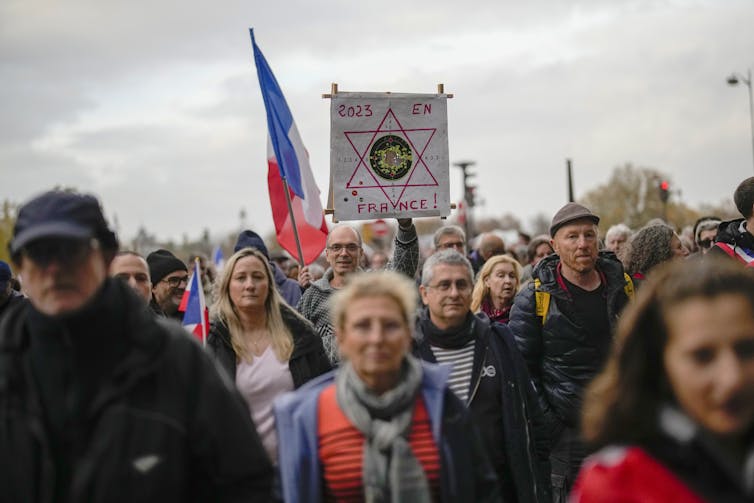
Antisemitism today
Research into current antisemitism has demonstrated it takes three principal forms. It begins with religious anti-Judaism, then mutates into racial antisemitism, and, most recently, political antisemitism associated with the Israeli-Palestinian conflict, in which ostensible criticisms of Israel can morph into an irrational hatred of Jews.
Often referred to as the “new antisemitism”, this third manifestation constitutes a virulent strain in both high schools and universities.
As in other parts of the world, antisemitism in Australia has been prevalent among those on the radical right and radical left, as well as with extremist Islamic groups, beginning in the 1980s. Spikes in antisemitism are often associated with events in the Middle East and relate to the Palestinian-Israeli conflict.
The resurgence of extreme nationalist and white supremacist movements has been another major factor behind antisemitism in recent years. In Australia, organisations such as Antipodean Resistance and Geelong Chemtrails have emerged recently, propagating Holocaust denial and replacement ideologies, especially on university campuses.
Since 1989, the Executive Council of Australian Jewry has monitored the level of antisemitism in Australia. The number of reported incidents has risen steadily since then, although Australia’s population has also grown. These incidents include abusive emails, mail and phone calls; graffiti; verbal harassment and abuse (including the bullying of Jewish children at schools); and physical violence against individuals and institutions.
Online harassment is the greatest concern today. During the brief Israel-Hamas conflict in May 2021, Australia saw an increase in verbal abuse online, particularly targeting Jewish students at universities.
The medium may be new, but the sentiments are not. Those with antisemitic beliefs continue to propagate traditional anti-Jewish stereotypes, such as the “international Jewish conspiracy” and “Jewish-Nazi analogy”, linked to Holocaust denial. Conspiracy theories emerged again during the COVID pandemic, with some right-wing groups claiming it was a Jewish plot.
I hope a new narrative that is both pro-Israel and pro-Palestine will emerge from the current conflict, which seeks dialogue and compromise between the two sides.
This piece is based partially on a chapter written by the author that was published in The Routledge History of Antisemitism. It was published by The Conversation.
Suzanne Rutland is Professor in the Department of Hebrew, Biblical and Jewish Studies at the University of Sydney. Her research explores Judaism and Islam in Australia, Soviet Jewry, the Holocaust and its aftermath.

